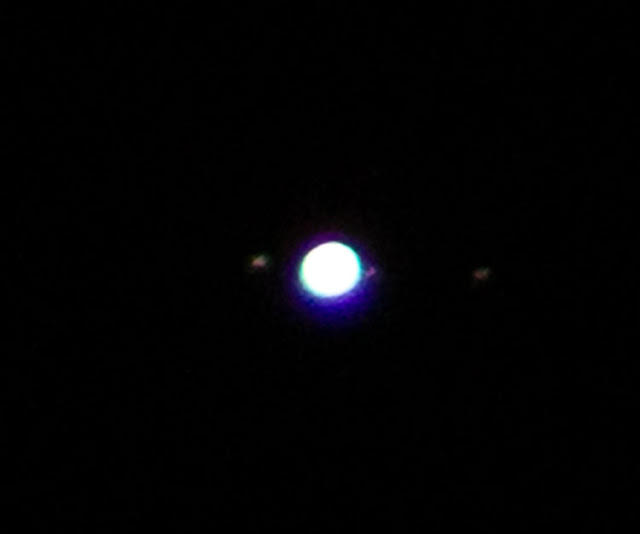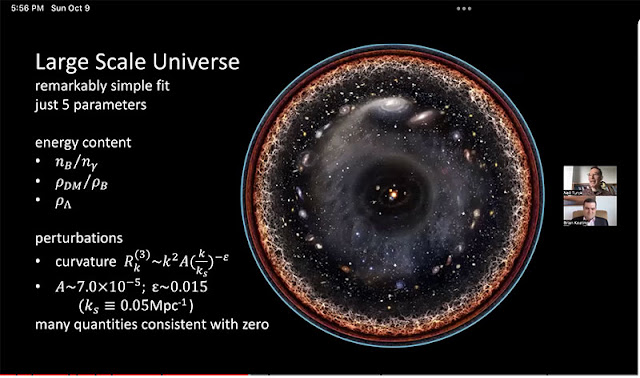Greetings from Palmia Observatory
Well it has been a while since the last post, so lets just get started.
I had to put back on my old "engineering hat" and walk around the exhibit hall at the 2022 Renewable Energy Conference at the Anaheim Convention Center. It was a lot of fun, and I mostly looked up vendors that offered small chocolate treats for stopping by their booths. It was neat to see all the vendors making balance of plant equipment for wind and solar power systems. After walking the hall for several hours I was ready to go. Hmm, I guess I mostly just want to wear my "physicist wannabe hat."
 |
| Trying on the old "engineering hat" at Anaheim Convention Center (Source: Palmia Observatory) |
But, while out on a walk with Astronomer Assistant Ruby, on a recent night, the near conjunction of the Moon and Jupiter caught my attention. I have not been out with a camera for night sky observing for some months now. Here is the moon photo taken with DSLR on flimsy tripod. Jupiter was maybe something like 10 degrees away from the Moon.
 |
| Near full moon with Jupiter close by, DSLR, 300mm, 1/1600 second (Source: Palmia Observatory) |
A quick peek at Jupiter with 300mm DSLR shows some visible moons. This image seems not as clear as what I remember seeing and photographing in the past. Maybe because then I was using the heavier 600mm lens.
 |
| Looking for Jupiter's moons, DSLR, 300mm, 1/8 second (Source: Palmia Observatory) |
Now for all of you physicist wannabes, I found this video conversation on Brian Keating's podcast with Neil Turok of special interest. Turok discusses some part of his latest conjecture that the flatness of the observed universe is best explained by examining the effects of gravity and entropy, rather than some "mysterious" inflation process. You can check out the whole 2 hour video conversation at: https://www.youtube.com/watch?v=Dt5cFLN65fI
 |
| Discussion with Neil Turok on simplified model of why the universe is flat (Source: Brian Keating) |
If you look at the current understanding of the nature of the cosmos, large scale behavior is governed by known laws of physics with just four adjustable parameters. This makes it very simple, but which we normally think of it as very complicated, but at a smoothed view it is very simple.
 |
| The universe described with just 5 parameters (Source: Neil Turok) |
Neil and Brian then talked about the simplicity of the Higgs mechanism in that it was initially published in a short two page paper. It seems that it was indeed a simple idea that was not noticed by many other physicists.
 |
| The original Higgs paper is two pages of "simplicity" (Source: Brian Keating) |
The fundamental laws of physics can also be summarized in a "simple" equation. Check out Turok's summary equation below. We have seen similar equation types before but there are a lot of questions about how all of the components actually work. The exponential term seems to represent a bunch of calculations that represent a phase angle, so we will get a bunch of interactions that result in constructive and destructive interference. The net result is something like the least action principle. Nonetheless, I can't even begin to see how to work all of this out, even for the simpler case of just considering the electromagnetic portion, symbolized by "F."
Anybody out there have an easy example that works through this equation?
 |
| One "simple" equation for all of physics (except dark matter/energy) (Source: Neil Turok) |
Turok brings up this simple equation in order to try to make a simple interpretation of the evolution of the universe from the big bang. He explores the concept of the "perfect mirror", sort of like the mirror method of calculating electric fields or calculating mirror images, without having to do all the messy calculations. In that case we just posit an imaginary charge, of opposite charge, on the other side of the "mirror" and this allows the calculations to go forward with less effort and yet get the correct answer much easier.
Here Turok poses much of the same thing with a perfect mirror with the big bang sort of right in the middle. He argues that the simple approach of the perfect CPT (Charge-Parity-Time Symmetry) represents an ideal way of conceptualizing what happened at the big bang. The proposed CPT symmetry is a new way of calculating the gravitational entropy
 |
| New conjecture that sees the big bang as a perfect CPT mirror (Source: Neil Turok) |
I don't understand how this conjecture is going to work, but we will remain ready to read the upcoming paper. Turok goes on to the conjecture about creating a universe that is flat without introducing the concept of inflation. His example is of the Earth, where gravity can create an impression of "flatness" in a local small area around your location, even though the who Earth is round and not flat.
 |
| Analogy showing how gravity on large scales causes flatness (Source: Neil Turok) |
Now if you extend this analogy to the whole universe and do some technical calculations about gravity and entropy, first introduced by Hawking, then you can calculate how the flatness of the universe can be guaranteed just by gravity alone with no need to introduce the concept of inflation.
I remember some years back, I was seated next to Dr. Virginia Trimble, UCI, at a dinner meeting and I asked her why the theory of inflation had not yet won a Nobel prize. I forget her exact answer, but it was something like the theory sort of fit the facts of observation but there were too many loose ends and baggage that went unexplained.
For the details of the calculation, check out the arXiV:2201.07209.
 |
| Calculating how gravity alone can cause universal flatness (Source: Neil Turok, arXiV:2201.07209) |
So, I really like this idea that gravity and entropy, both of which we have some understanding, can operate at large galactic scales to make the universe flat, without bring some new "inflation" particle or field into the discussion. Turok admits to having been wrong in the past, but maybe this time he has hit on a simpler explanation for the flatness of the universe. Interestingly, he pointed out that the variation in the CMB is about 1 part in 10,000, which is close to the fine structure constant squared.
Finally, after some preliminary exploration of this neat idea, let's just finish up with a photo of two new observatory occupants. Here our new black cat is surveying the environment while sitting on top of a Halloween pumpkin.
 |
| Black cat rides a Halloween pumpkin outside of the observatory (Source: Palmia Observatory) |
Until next time,

No comments:
Post a Comment